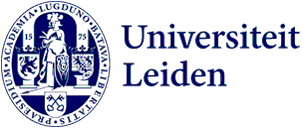
Rubicon grant for Leiden physicist: why do leaves of a tree always grow in the same shape?
PhD candidate Ludwig Hoffmann will spend two years at Harvard University in the US thanks to a Rubicon grant he won on April 11. Using theoretical models he studies biological tissues, for example during morphogenesis. This is the process that causes tissue or organisms to develop their shape. ‘This grant allows me to work in one of the leading groups on soft matter research.’
Every chestnut leaf has the same typical shape. It will never look like that of an oak tree. Most people take this for granted, but not Hoffmann. He aims to figure out how this is actually possible. ‘Leaves of a certain plant or wings of a certain species of insects always grow into the same shape. But between species, there is a lot of diversity. At Harvard, I will develop a theoretical model to learn the general rules that govern the growth of leaves and wings.’
Matter that can move itself
Hoffmann works in the group of Luca Giomi, which aims at deciphering how physical organisation emerges in complex and biological matter. ‘The research I carry out in Leiden relates to the field of ‘active matter’. This is matter of which the constituent elements consume energy, allowing them to move for example. This can result in a number of fascinating phenomena. One example is the flocking of birds which is surprisingly complex and has now been successfully described.
'This grant gives me the freedom to choose the research topics I want to pursue.'
My main project was to investigate the interplay of active matter with geometry, developing models to explain the formation of structures during morphogenesis. The growing leaf or wing can be modelled as a growing elastic surface. Therefore, I can investigate plant leaves and insect wings simultaneously.’
A stepping stone for a research career
Hoffmann is looking forward to the opportunity the grant gives him. ‘Thanks to the Rubicon grant I can spend two years in the Mahadevan group at Harvard. This is one of the leading groups worldwide working on the intersection of geometry and soft matter,’ he explains. ‘With my background in geometry and active matter, it’s the perfect place to continue my research while learning about new tools and methods. And the grant gives me the freedom to choose the research topics I want to pursue!’
Hoffmann was happy to hear that his proposal was accepted. ‘I was not sure at all that this would happen, so it was a very positive surprise.’ His promotor Luca Giomi is also pleased with the news. ‘I'm very happy for Ludwig's Rubicon, he fully deserves it. Mahadevan has been a great mentor to me during my postdoc years at Harvard. From him, I learned how to find simplicity in complex phenomena and how to find complexity in simple things, such as the folds of a piece of cloth. I'm sure Ludwig will benefit from Mahadevan’s creativity and wisdom, and that his career will skyrocket!’
With a Rubicon grant, young researchers can do their research at a foreign institute that offers the best environment for their specific research. The grant is provided by NWO and ZonMw. The Rubicon programme gives highly promising researchers the opportunity to gain international research experience that is so important for their academic careers. For 1 or 2 years, the awardees can work at a research institute of their choosing. Learn more about the awarded projects.
